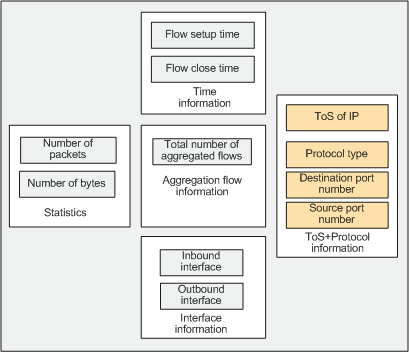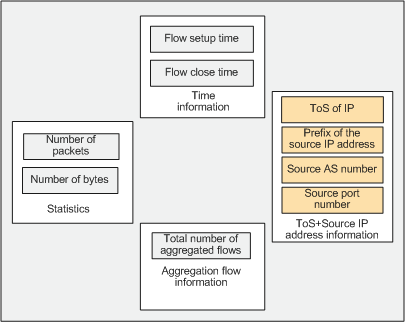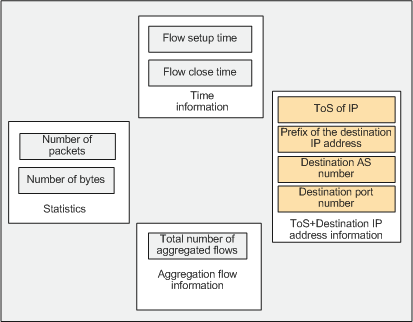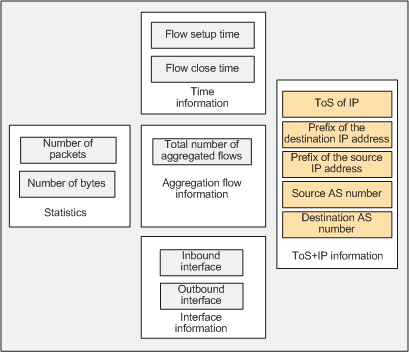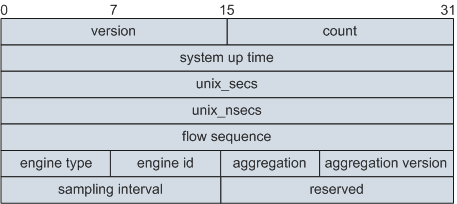Packet Exported in V8 Format
Header of a NetStream Packet Exported in V8 Format
Figure 1 shows the format of the header of a NetStream packet exported in V8 format. This header corresponds to the Header field in Figure 1. Table 1 describes the fields in the header.
Field |
Description |
|---|---|
version |
Version number of the format in which NetStream packets are exported. Value 0x08 indicates the V8 format. |
count |
Number of streams in the existing NetStream packet, not the number of streams in all NetStream packets. |
system up time |
Period (in milliseconds) from the time the system is booted to the time a NetStream packet was generated. |
unix_secs |
Integer number of seconds elapsed from 00:00:00, January 1st, 1970 to the time a NetStream packet was generated. |
unix_nsecs |
Integer number of nanoseconds equal to the time the packet was generated minus unix_secs. |
flow sequence |
Sequence number of an exported stream record: In the first NetStream packet, the value is 0, and the count of streams in the NetStream packet is c1 (count = c1). In the second NetStream packet, the value is c1, and the count of streams in the NetStream packet is c2 (count = c2). In the third NetStream packet, the value is c2 + c1. ... In the n - 1 NetStream packet, the value is fs(n - 1), and the count of streams in the NetStream packet is c(n - 1). In the Nth NetStream packet, the value is fs(n - 1) + c(n - 1). You can check whether a NetStream packet is dropped based on the flow sequence value. When the stream sequence number overflows, NetStream packets transmission continues. |
engine type |
Type of the flow switching engine. The value is the device type. |
engine id |
Slot number of the switching engine. The value is the slot number of the NetStream board. |
aggregation |
Aggregation mode: 01: as 02: protocol-port 03: source-prefix 04: destination-prefix 05: prefix 09: as-tos 0a: protocol-port-tos 0b: source-prefix-tos 0c: destination-prefix-tos 0d: prefix-tos |
aggregation version |
Version number of the format in which the aggregated NetStream packet is exported. The value is 0x02. |
sampling interval |
Sampling interval. The value is 0. |
reserved |
Reserved field, which is all 0s. |
Information Carried in the NetStream Packet Exported in V8 Format
Starting from V8, original streams can be aggregated on an NDE. Aggregation refers to the action of classifying and combining original streams into one stream based on specified rules. Aggregated streams can be transmitted with less network bandwidth. In V5 or V8, the stream aggregation is implemented on an NDC.
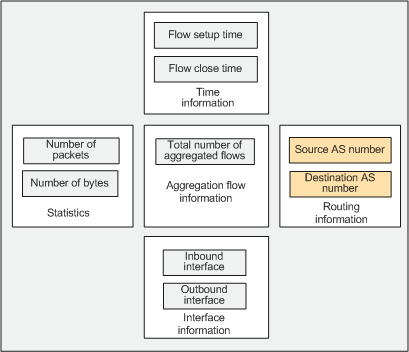
This aggregation mode is primarily used to collect statistics about packets and bytes exchanged between devices in two ASs. You can perform payment settlement based on the collected traffic of AS domain packets. For the source AS:
- If an original AS is used as a source AS, the source AS number identifies the AS to which the source address belongs.
- If a peer AS is used as a source AS, the source AS number identifies an AS along an AS path.
- If the source address belongs to a local AS or if the AS number cannot be obtained from the routing table, the source AS number is set to 0.
- If the destination AS is the original AS, the destination AS number is the AS to which the destination address belongs.
- If the destination AS is the peer AS, the destination AS identifies an AS along an AS path.
- If the destination address belongs to the local AS or if the AS number cannot be obtained from the routing table, the destination AS number is set to 0.
The source and destination AS numbers are used to perform AS-based flow aggregation.
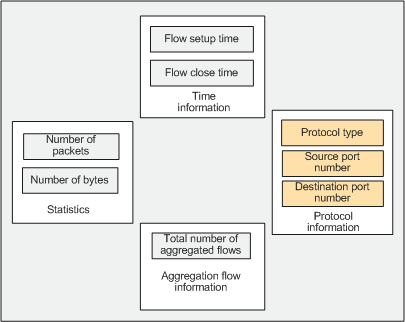
In this mode, packets of the same protocol type at the transmission layer (TCP and UDP), and with the same source and destination port numbers are aggregated. If the Protocol Type field is 6, the protocol is TCP. If the Protocol Type field is 17, that the protocol is UDP.
For non-TCP or non-UDP packets, the source port number is 0. For ICMP packets, the destination port number is determined by the Type and Code fields in the packets.
For non-TCP or non-UDP packets, the destination port number is 0.
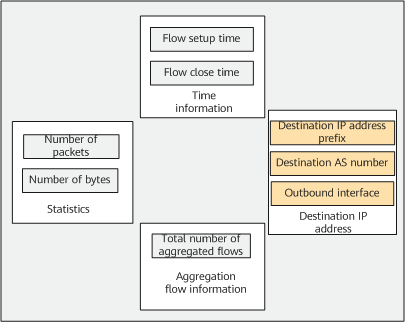
In this mode, packets with the same destination IP address prefix are aggregated.
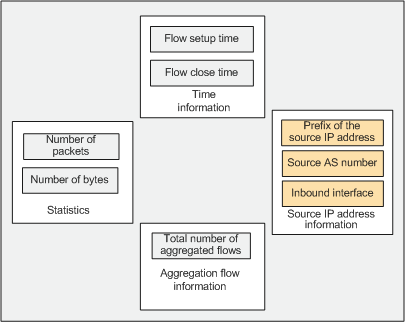
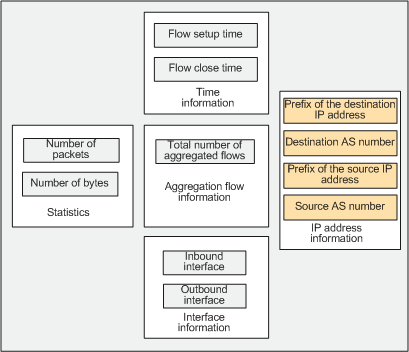
In this mode, packets with the same source IP address prefix and the destination IP address prefix are aggregated.
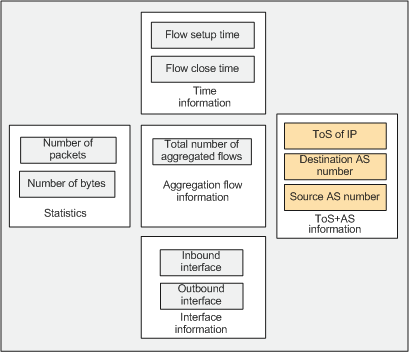
Type of service (ToS) is a field in the IP packet header used to set a packet priority value.
